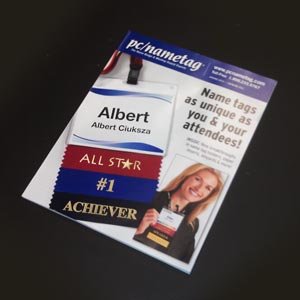For those who might not know, I host a radio show for my real job called Pittsburgh Impact Radio (click here for the iTunes podcast). In my most recent show, I interviewed Buy Pittsburgh First, an organization that promotes the idea that companies can, and should, buy from local suppliers. From an economic development standpoint, this is a huge opportunity — between 40%-60% additional economic impact is made when a purchaser buys from a local supplier vs. a national/non-local one. That translates to jobs, more consumption of local products and services, multiplier effects and other good stuff.
As an entrepreneur currently selling into the local and national market, I too have skin in the buy local game. It is easier for me to market and sell product to companies nearby (I can demonstrate how our product looks and works). It’s cheaper for me to fulfill my orders to local companies. And, in the (rare) case where something isn’t quite right, I can fix it personally. Our company is another case study in why buying local makes sense — the service is often far beyond any national vendor and we’re willing to go above-and-beyond in ways that are impossible for our other customers across the country.
So, my ‘buying local’ mistake. Somewhere in the radio interview, and I believe it might have been said multiple times, I mentioned that there is an obligation to buy from local vendors. Given the regional impact, and what it can do to accelerate growth, it sounds like something that is reasonable to say. Further, I have also worked in economic development for seven years, so I’m comfortable talking about connections between buying from companies and how that can impact an economy. But, after more reflection, I realized that I was dead wrong. There is no obligation. And there’s nothing wrong with that.
In any business transaction, the decision comes down to what option brings the most value. Some of these are objective measures (price, turnaround time), and some of these are completely subjective (brand, reputation). A commitment to buying local is decidedly a subjective perception of value. Regardless of how much value we might individually place on buying local, that doesn’t mean that we do it at each opportunity, or that it’s right to always buy local. Sometimes, the local option just doesn’t deliver the value we need, regardless of proximity.
I won’t say that it doesn’t hurt when a local company won’t take a meeting or consider our product. I’ll admit to getting irritated when a company decides against giving us a chance to prove our concept. But, the reality is that it’s not their fault for not buying. It’s our fault for not delivering enough value (or, worse, targeting the wrong market).
This doesn’t mean that I will not continue to be an advocate for buying local — I think it’s a great opportunity to have a disproportionate impact on the local economy (and get exceptional customer service at the same time). However, I have made a decision to stop making it personal, start delivering more value, and eliminating the words “should” and “obligated” from my vocabulary.








